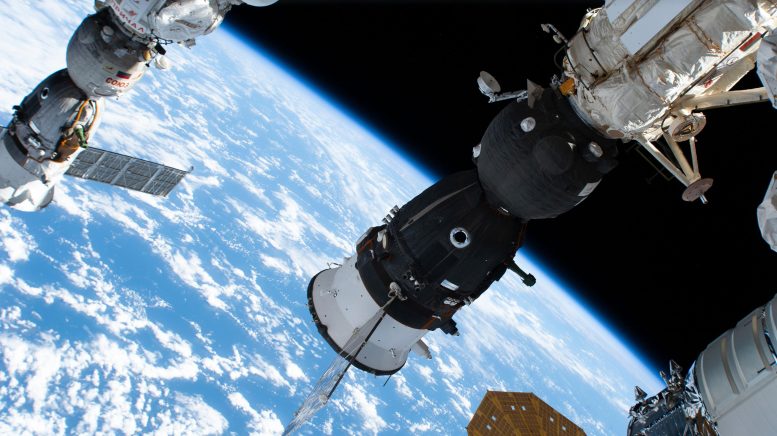
The Soyuz MS-24 spacecraft that carried NASA astronaut Loral O’Hara and Roscosmos cosmonauts Oleg Kononenko and Nikolai Chub to the International Space Station is pictured docked to the Rassvet module. At far left, is the Soyuz MS-23 crew ship, docked to the Prichal docking module, that will return NASA astronaut Frank Rubio and Roscosmos cosmonauts Sergey Prokopyev and Dmitri Petelin back to Earth on September 27. Credit: NASA
Expedition 69 crew aboard the ISS engaged in a variety of tasks, from space gardening and research to suit preparations and descent training, showcasing the collaborative spirit of space missions.
Friday, September 22, was a busy day for the Expedition 69 crew ahead of their off-duty weekend aboard the International Space Station (ISS). Preparing for upcoming crew departures and October spacewalks, health exams, and space gardening topped the ten crew members’ research schedules.
Flight Engineer Jasmin Moghbeli of NASA started her day with orbital plumbing and maintenance on the EXPRESS racks, payloads used for storing research experiments. After lunch, she continued station upkeep tasks, removing and troubleshooting lights and inspecting the station’s cupola, or “window to the world.” Later in the day, Moghbeli was joined once again by ESA (European Space Agency) astronaut Andreas Mogensen and JAXA (Japan Aerospace Exploration Agency) Flight Engineer Satoshi Furukawa for another round of eye exams.
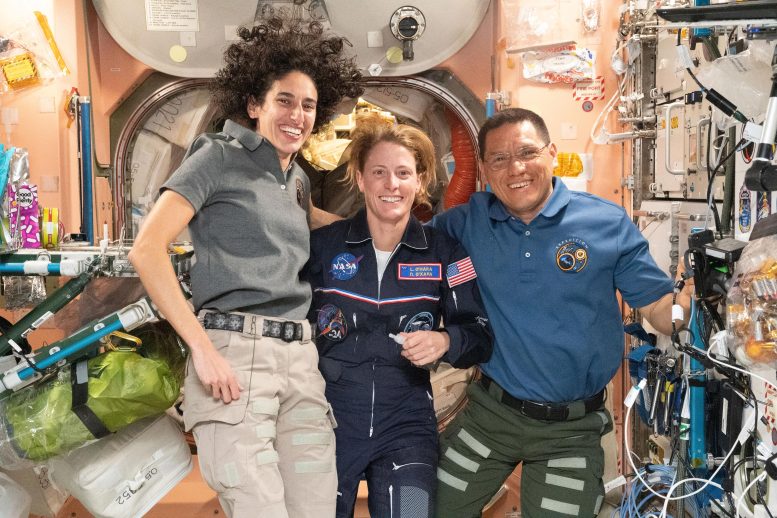
Expedition 69 Flight Engineers (from left) Jasmin Moghbeli, Loral O’Hara, and Frank Rubio, all NASA astronauts, pose for a portrait aboard the International Space Station’s Unity module. All three crew members were selected as part of the NASA astronaut class of 2017. Credit: NASA
Mogensen then moved into some space gardening, harvesting the final round of Arabidopsis plants, part of the Plant Habitat-03 investigation. The experiment aims to help researchers better understand how adaptations of plants in one generation could transfer to the next, given the environmental stress of the microgravity environment. Research as such provides an array of scientific data that can be applied on future space missions.
Ahead of eye exams, Furukawa spent his morning in the Kibo Laboratory Module, installing solid combustion into the Multipurpose Payload Rack, research of this magnitude helping improve fuel efficiency and fire safety both on orbit and on Earth.
Flight Engineer Loral O’Hara of NASA was joined by Mogensen and NASA astronaut Frank Rubio in the morning to replace batteries and install restraint straps and helmet lights to spacesuits in preparation for a round of U.S. spacewalks in October.
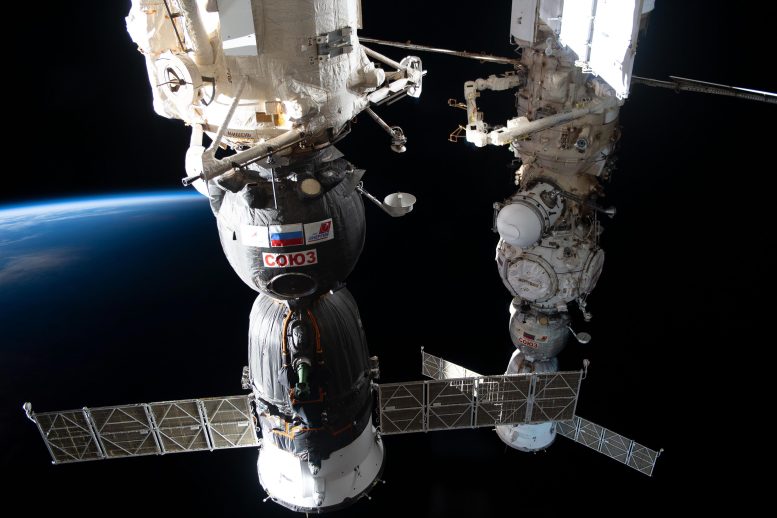
The Soyuz MS-24 spacecraft (foreground) that carried NASA astronaut Loral O’Hara and Roscosmos cosmonauts Oleg Kononenko and Nikolai Chub to the International Space Station is pictured docked to the Rassvet module. In the rear, is the Soyuz MS-23 crew ship, docked to the Prichal docking module, that will return NASA astronaut Frank Rubio and Roscosmos cosmonauts Sergey Prokopyev and Dmitri Petelin back to Earth on September 27. Credit: NASA
After spacesuit maintenance, Rubio was joined by Commander Sergey Prokopyev and Flight Engineer Dmitiri Petelin of Roscosmos to train on the descent of the Soyuz spacecraft they’ll take home in just a few short days. After spending over a year in space, the three long-serving residents will undock from the station’s Prichal Module at 3:55 a.m. EDT on Wednesday, September 27. Following a quick ride back home, they will land in Kazakhstan at 7:17 a.m.
The three other crew members of Roscosmos split up the orbital duties today. Flight Engineer Konstantin Borisov conducted maintenance activities in the Nauka module, while Oleg Kononenko donned a sensor-packed cap to practice piloting techniques and explore how spacecraft can be controlled on future planetary missions as part of the ongoing Pilot-T investigation. Powered on earlier this week, the EarthKam—a digital camera mounted on the station that is remotely controlled by students to take photographs of Earth—was shut off and stowed for future use by Flight Engineer Nikolai Chub.

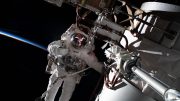


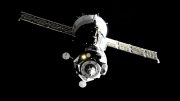
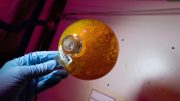

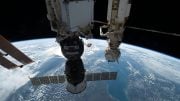
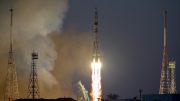
Be the first to comment on "Space Gardening, Prepping Spacesuits, and Descent Training on the International Space Station"